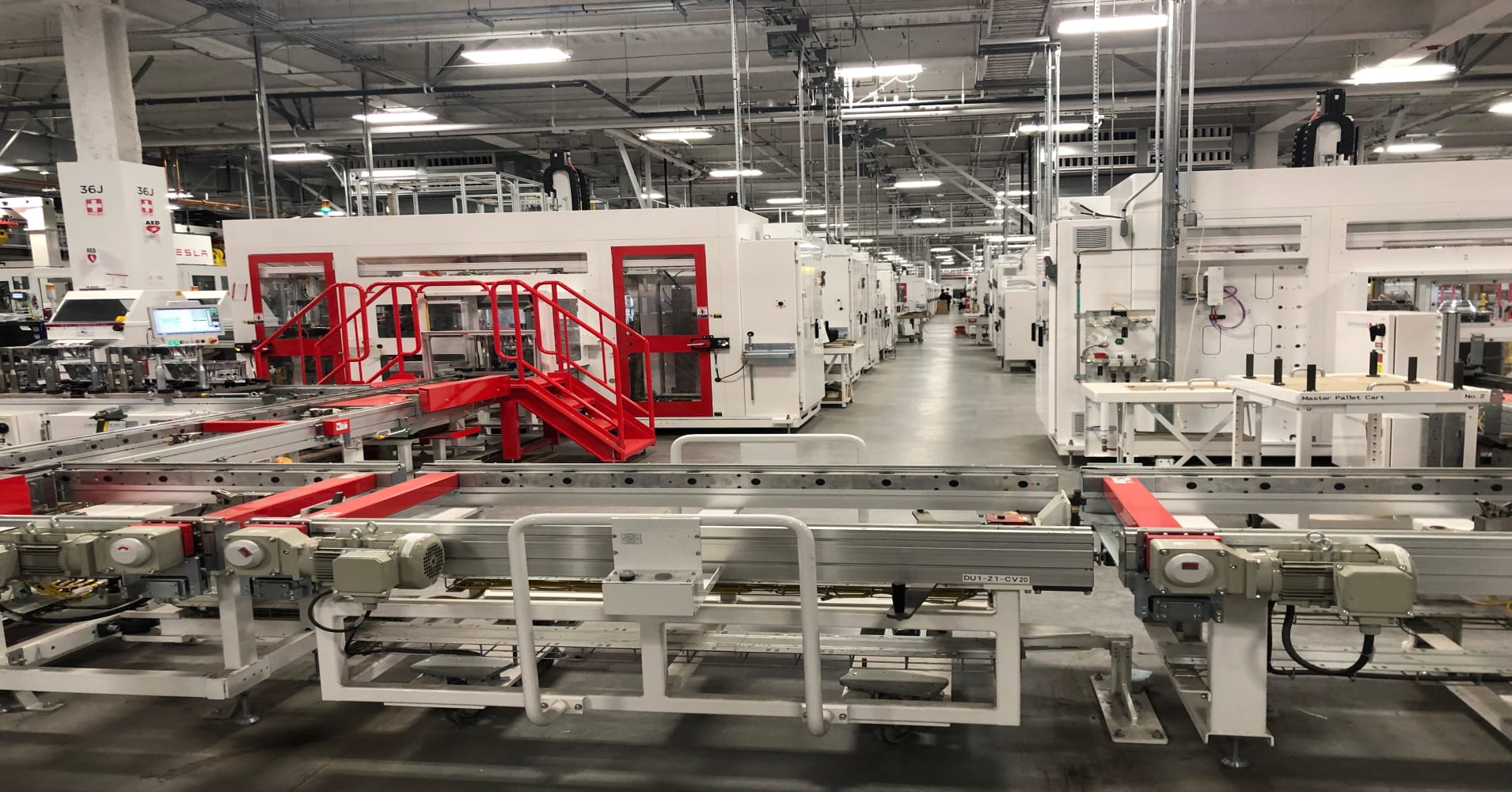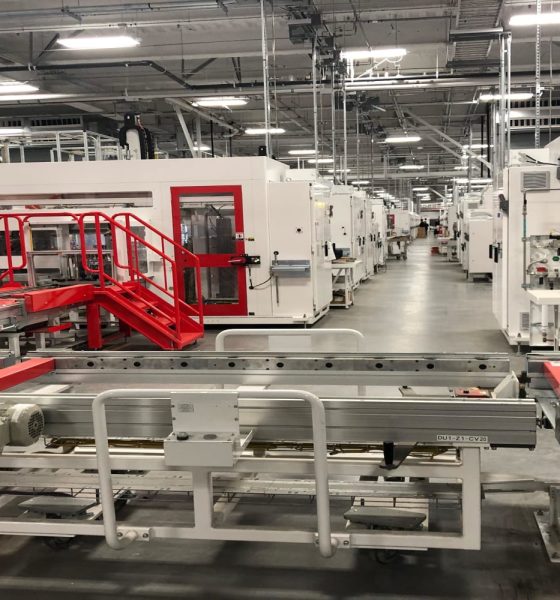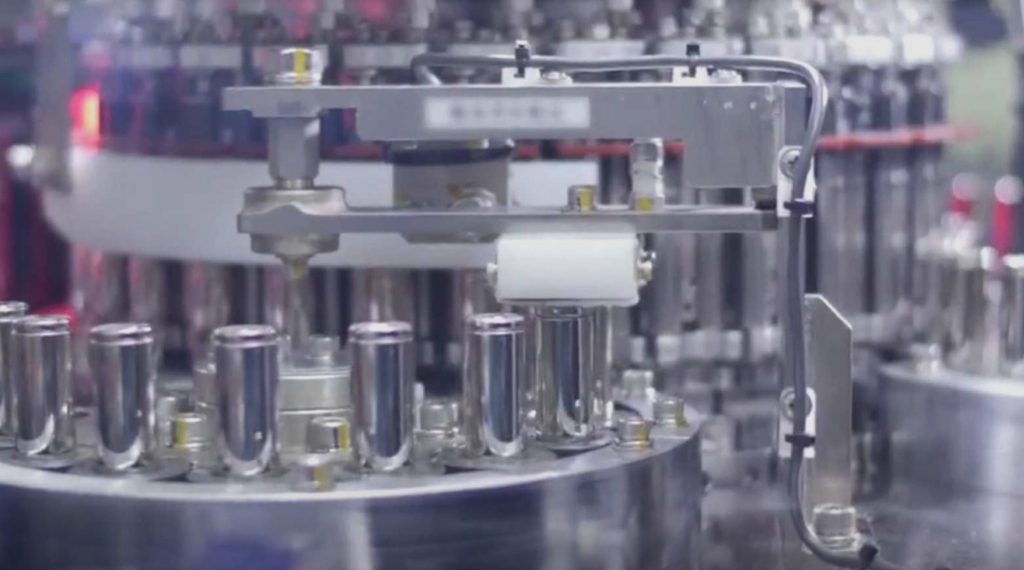

News
Tesla’s ‘skunkworks lab’ for its custom battery cell pilot production line is growing
Tesla’s Battery Day may still be a couple of months away, but hints about the highly-anticipated event’s details are already abounding. With Elon Musk specifically mentioning that the event will be held in Fremont, and that it will include a tour of the company’s pilot battery cell production line, it appears that previous reports, which point to a “skunkworks lab” in the city, were accurate. What’s more, documents filed by the electric car maker in previous months seem to indicate that its mysterious pilot battery cell facility is growing.
Initial leaks and reports about Tesla’s mysterious “skunkworks lab” were posted as early as June 2019, with a CNBC article stating that the facility is located at Kato Road, just a few minutes away from the Fremont factory, where the Model S, Model 3, Model X, and Model Y are built. Citing former and current Tesla employees, the news agency stated that Tesla’s R&D teams were focused on prototyping and designing advanced lithium-ion batteries, as well as new equipment and processes that could usher in the mass production of the next-gen cells.
These batteries are now widely speculated to be the million-mile battery that has been mentioned by the company. The million-mile battery is a significant part of Tesla’s game plan, being the one defining factor that could help electric vehicles achieve price parity with gas powered cars, and allow battery storage devices to last decades when deployed. Amidst the wait for Battery Day, speculations are abounding that Tesla will be conducting a deep dive into its million-mile batteries during the event, similar to how Autonomy Day included an in-depth discussion on the company’s custom Hardware 3.0 computer.

As it turned out, Tesla’s skunkworks lab at Kato Road has been very busy this year. A proposal submitted last March, for example, outlines plans to redevelop the existing site by adding floors to the facility. According to Tesla, the redesigned building will be housing 45 research and development employees and up to 425 manufacturing workers that are spread through several shifts from Monday through Friday. This appears to suggest that the company, as early as March this year, was looking to ramp the battery cell output of its pilot production line.
Interestingly enough, Tesla has also been posting multiple job listings on its Careers page that were specifically focused on battery cell manufacturing. By May 2020, Tesla had posted job listings for Cell Engineers, Production Process Engineers, and Controls Engineers. A look at these listings would show references to a battery cell manufacturing operations, and as luck would have it, the posts listed Fremont, California as their location.
Further documents show that Tesla had also requested to increase its power demand by 6 MW, further hinting that activities in the site are poised to ramp soon. This proposal, based on a response from PG&E that was recently shared online, was approved.
Based on these filings and job listings, it is evident that Tesla’s pilot battery cell manufacturing line has been ramping, or at least is poised to ramp, its operations. This is particularly impressive, considering that the Kato Road facility, which reportedly hosts the company’s skunkworks lab, is a fairly small site, comprising of two buildings that cover 184,880 sq. ft. combined. This means that even in this relatively small location, Tesla has been able to create a pilot line for a new breed of batteries that can change the EV game. This is quite a significant accomplishment, considering that previous battery lines are known to consume a lot of space.
Tesla’s Gigafactory Nevada facility is the perfect example of this. Giga Nevada primarily produces battery cells, and it is poised to be one of the largest buildings in the world by footprint once it’s complete. If Tesla’s pilot battery cell production line in Kato Road is indeed fully functional and ramped, then one can only imagine how much more batteries facilities like Gigafactory Nevada can produce with the company’s next-generation technology.
Tesla’s proposal for an expansion of its Kato Road facility could be accessed below.
Tesla Kato Road Update by Simon Alvarez on Scribd
H/T JPR007

News
Tesla FSD fleet is nearing 7 billion total miles, including 2.5 billion city miles
As can be seen on Tesla’s official FSD webpage, vehicles equipped with the system have now navigated over 6.99 billion miles.

Tesla’s Full Self-Driving (Supervised) fleet is closing in on almost 7 billion total miles driven, as per data posted by the company on its official FSD webpage.
These figures hint at the massive scale of data fueling Tesla’s rapid FSD improvements, which have been quite notable as of late.
FSD mileage milestones
As can be seen on Tesla’s official FSD webpage, vehicles equipped with the system have now navigated over 6.99 billion miles. Tesla owner and avid FSD tester Whole Mars Catalog also shared a screenshot indicating that from the nearly 7 billion miles traveled by the FSD fleet, more than 2.5 billion miles were driven inside cities.
City miles are particularly valuable for complex urban scenarios like unprotected turns, pedestrian interactions, and traffic lights. This is also the difference-maker for FSD, as only complex solutions, such as Waymo’s self-driving taxis, operate similarly on inner-city streets. And even then, incidents such as the San Francisco blackouts have proven challenging for sensor-rich vehicles like Waymos.
Tesla’s data edge
Tesla has a number of advantages in the autonomous vehicle sector, one of which is the size of its fleet and the number of vehicles training FSD on real-world roads. Tesla’s nearly 7 billion FSD miles then allow the company to roll out updates that make its vehicles behave like they are being driven by experienced drivers, even if they are operating on their own.
So notable are Tesla’s improvements to FSD that NVIDIA Director of Robotics Jim Fan, after experiencing FSD v14, noted that the system is the first AI that passes what he described as a “Physical Turing Test.”
“Despite knowing exactly how robot learning works, I still find it magical watching the steering wheel turn by itself. First it feels surreal, next it becomes routine. Then, like the smartphone, taking it away actively hurts. This is how humanity gets rewired and glued to god-like technologies,” Fan wrote in a post on X.
News
Tesla starts showing how FSD will change lives in Europe
Local officials tested the system on narrow country roads and were impressed by FSD’s smooth, human-like driving, with some calling the service a game-changer for everyday life in areas that are far from urban centers.

Tesla has launched Europe’s first public shuttle service using Full Self-Driving (Supervised) in the rural Eifelkreis Bitburg-Prüm region of Germany, demonstrating how the technology can restore independence and mobility for people who struggle with limited transport options.
Local officials tested the system on narrow country roads and were impressed by FSD’s smooth, human-like driving, with some calling the service a game-changer for everyday life in areas that are far from urban centers.
Officials see real impact on rural residents
Arzfeld Mayor Johannes Kuhl and District Administrator Andreas Kruppert personally tested the Tesla shuttle service. This allowed them to see just how well FSD navigated winding lanes and rural roads confidently. Kruppert said, “Autonomous driving sounds like science fiction to many, but we simply see here that it works totally well in rural regions too.” Kuhl, for his part, also noted that FSD “feels like a very experienced driver.”
The pilot complements the area’s “Citizen Bus” program, which provides on-demand rides for elderly residents who can no longer drive themselves. Tesla Europe shared a video of a demonstration of the service, highlighting how FSD gives people their freedom back, even in places where public transport is not as prevalent.
What the Ministry for Economic Affairs and Transport says
Rhineland-Palatinate’s Minister Daniela Schmitt supported the project, praising the collaboration that made this “first of its kind in Europe” possible. As per the ministry, the rural rollout for the service shows FSD’s potential beyond major cities, and it delivers tangible benefits like grocery runs, doctor visits, and social connections for isolated residents.
“Reliable and flexible mobility is especially vital in rural areas. With the launch of a shuttle service using self-driving vehicles (FSD supervised) by Tesla in the Eifelkreis Bitburg-Prüm, an innovative pilot project is now getting underway that complements local community bus services. It is the first project of its kind in Europe.
“The result is a real gain for rural mobility: greater accessibility, more flexibility and tangible benefits for everyday life. A strong signal for innovation, cooperation and future-oriented mobility beyond urban centers,” the ministry wrote in a LinkedIn post.
News
Tesla China quietly posts Robotaxi-related job listing
Tesla China is currently seeking a Low Voltage Electrical Engineer to work on circuit board design for the company’s autonomous vehicles.

Tesla has posted a new job listing in Shanghai explicitly tied to its Robotaxi program, fueling speculation that the company is preparing to launch its dedicated autonomous ride-hailing service in China.
As noted in the listing, Tesla China is currently seeking a Low Voltage Electrical Engineer to work on circuit board design for the company’s autonomous vehicles.
Robotaxi-specific role
The listing, which was shared on social media platform X by industry watcher @tslaming, suggested that Tesla China is looking to fill the role urgently. The job listing itself specifically mentions that the person hired for the role will be working on the Low Voltage Hardware team, which would design the circuit boards that would serve as the nervous system of the Robotaxi.
Key tasks for the role, as indicated in the job listing, include collaboration with PCB layout, firmware, mechanical, program management, and validation teams, among other responsibilities. The role is based in Shanghai.
China Robotaxi launch
China represents a massive potential market for robotaxis, with its dense urban centers and supportive policies in select cities. Tesla has limited permission to roll out FSD in the country, though despite this, its vehicles have been hailed as among the best in the market when it comes to autonomous features. So far, at least, it appears that China supports Tesla’s FSD and Robotaxi rollout.
This was hinted at in November, when Tesla brought the Cybercab to the 8th China International Import Expo (CIIE) in Shanghai, marking the first time that the autonomous two-seater was brought to the Asia-Pacific region. The vehicle, despite not having a release date in China, received a significant amount of interest among the event’s attendees.








